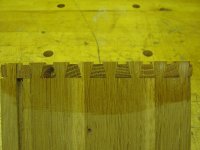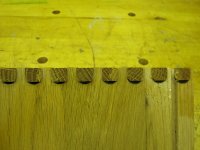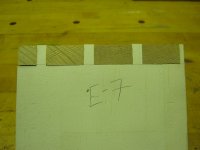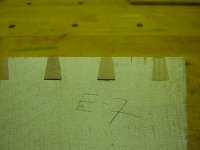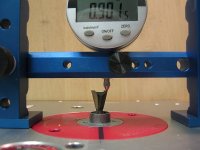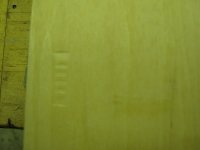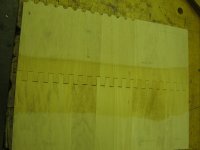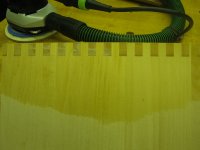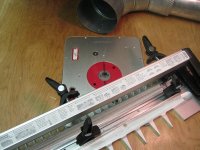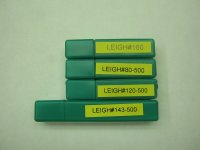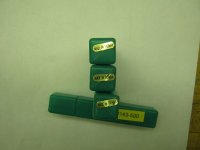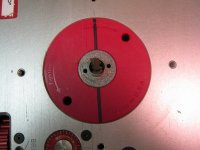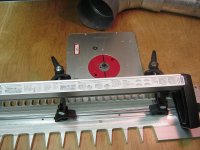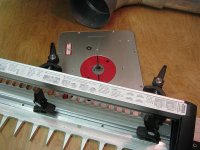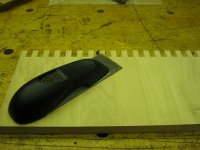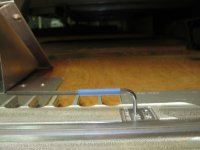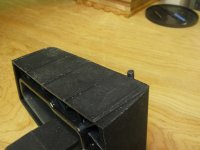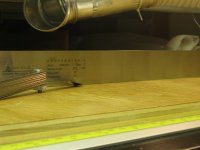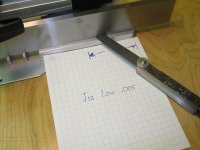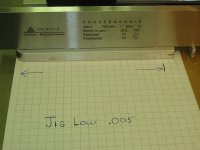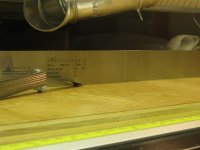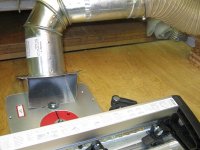jmarkflesher
Member
- Joined
- Aug 22, 2010
- Messages
- 248
Recently received the Leigh RTJ400 from Lee Valley. This IS my first dovetail jig. I will post as I muddle through. Some pictures first before the quality control. Disregard the plywood spline which appears in photo. This was a scrap from a drafting table.Both pieces of theHalf Blind Dovetail are cut at once.
[attachimg=1]
This was first cut starting at #5 on E-bushing. Tightness was good but it was over flush.
[attachimg=2]
This now was also good for flush by following directions and moving jig to -1. The photo shows I failed to reposition the board centered on jig so it was symmetrical.
[attachimg=3]
[attachimg=4]
These photos show 3/8" oak used for front and side. Sides can be 3/8" but front must be a minimum of 1/2" thickness, thus the tailboard goes through the face of the front pin board.I started out using scrap pieces of pine, slightly bowed or twisted. Don't waste your time, this will not give you good results and gives you a bad impression of the jig.
[attachimg=5]
[attachimg=6]
This is my first attempt at Through Dovetails. It is to loose at E-7. I will add to this post as I continue to use jig. MARK
[attachimg=1]
This was first cut starting at #5 on E-bushing. Tightness was good but it was over flush.
[attachimg=2]
This now was also good for flush by following directions and moving jig to -1. The photo shows I failed to reposition the board centered on jig so it was symmetrical.
[attachimg=3]
[attachimg=4]
These photos show 3/8" oak used for front and side. Sides can be 3/8" but front must be a minimum of 1/2" thickness, thus the tailboard goes through the face of the front pin board.I started out using scrap pieces of pine, slightly bowed or twisted. Don't waste your time, this will not give you good results and gives you a bad impression of the jig.
[attachimg=5]
[attachimg=6]
This is my first attempt at Through Dovetails. It is to loose at E-7. I will add to this post as I continue to use jig. MARK



